Prof. Hendrik Geyer
Biography: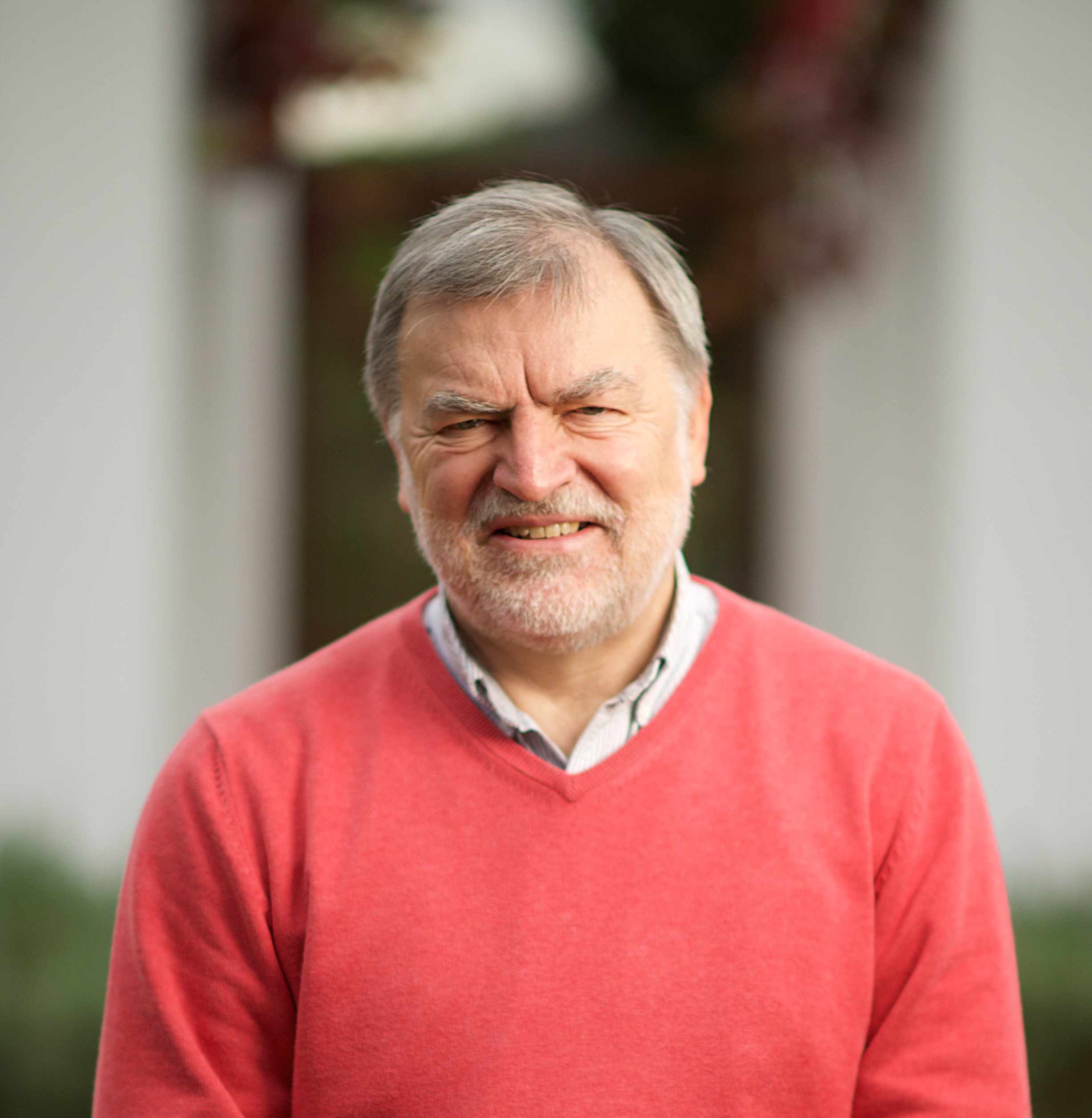
Hendrik Geyer is emeritus professor of theoretical physics at Stellenbosch University and was the full-time director of the Stellenbosch Institute for Advanced Study (STIAS) for eleven years. He holds an MSc in theoretical phyics from the Rand Afrikaans University (currently the Univerity of Johannesburg) and started his research career as member of the Atomic Energy Board’s Theoretical Physics Group at Pelindaba. With Fritz Hahne he developd a microscopic description of collective excitations in atomic nuclei based on a mathematical mapping (or isomorphism) of pairs of nucleons onto bosons which can act as fundamental building blocks for a variety of nuclear states.
He also developed the mathematical formalism which incorporates nucleons and bosons in a consistent framework which underpins supersymmetry observed in atomic nuclei. For this work he received a PhD from Stellenbosch University in 1981, whereafter he joined the nuclear theory group at the State University of New York (Stony Brook) as postdoctoral fellow.
In 1984 he was seconded by the AEB to the newly established Institute for Theoretical Nuclear Physics at Stellenbosch University; on returning from a one year Alexander von Humboldt fellowship in Germany he was appointed Professor of Theoretical Physics in 1990. He is the author of more than one hundred research articles and published conference proceedings, the editor of two books and a guest editor of Journal of Physics for a volume on non-Hermitian quantum mechanics. He supervised or co-supervised twelve masters and six PhD theses which covered fields as diverse as quantum many-body theory, quatum field theory, quantum information, the analysis of mining seismicity within the context of sandpile models, applications of evolutionary algorithims in quantum computing, and the relation between quantum theory and complexity from a philosophical viewpoint.
Hendrik Geyer has served the SA physics community in various capacities: as co-editor of the SA Journal of Physics, chairman of the SA Organization of Theoretical Physicists and principal grant holder and organiser for the series of Chris Engelbrecht summer schools, member of the SAIP council and chairman and convenor of the NRF Physics Evaluation panel. He chaired the Working Committee for the establishment of the National Institute for Theoretical Physics (NITheP) (currently NITheCS), was instrumental in its establishment, and served as its first interim director.
Under his leadership as director of STIAS the Institute’s fellowship programmes and external role were conceptualised, funded and implemented, culminating in an invitation to STIAS in 2018 to join the ranks of SIAS, the most prestigious international consortium of independent Institutes for Advanced Study. As a column writer for the “Wetenskap Vandag” (“Science Today”) column in the Afrikaans daily Die Burger and as a panel member of the weekly radio program “Hoe verklaar jy dit?” (“How do you explain that?”) he has been involved in the public communication and popularization of physics for twenty-five years.
Abstract Title: Who needs non-hermitian quantum mechanics?
I’ll introduce some basic quantum mechanics and simple models from nuclear physics to show how and why non-hermitian operators enter into quantum mechanics in the first place. This will be followed by discussing how one can construct a fully self-consistent non-hermitian quantum mechanical framework and how this relates to so-called PT-symmetric quantum mechanics. I’ll conclude by discussing how this work has impacted recent work in optics and other fields of physics.
Prof. Purushottam Chakraborty
Biography: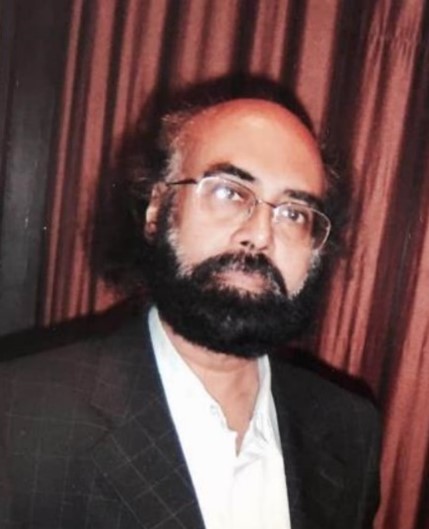
Purushottam Chakraborty, a Former Senior Professor of Physics, Saha Institute of Nuclear Physics, Kolkata, India and a Former Honorary Professor of Physics, University of Pretoria, South Africa is considered one of the leading experts in Materials Analysis using Ion Beams and Secondary Ion Mass Spectrometry (SIMS).
He was awarded the “Most Eminent Mass Spectroscopist of India” and conferred the “Gold Medal” by the Department of Atomic Energy (DAE), Government of India for his outstanding contributions in Secondary Ion Mass Spectrometry (SIMS). He received the “Premchand Roychand Scholarship (PRS)” and the prestigious “Mouat Medal” of Calcutta University. Prof Chakraborty’s research areas include: Atomic Collisions in Solids, Ion-Beam Modifications and Analysis of Materials, Secondary Ion Mass Spectrometry (SIMS), Low-dimensional Materials, X-UV optics, Optoelectronics, Nonlinear Optics, Photonics and Plasmonics.Prof Chakraborty indigenously designed and fabricated an RF-Quadrupole Mass Spectrometer for the first time in India for working on Atomic Collisions in Solids.
His “MCs n + molecular-ion based SIMS” is considered to be innovative for compositional analysis of nanoscale systems. His works on ‘layered Synthetic Microstructures (LSM)’ is recognized as a pioneering contribution in the “Realization of Optical Devices for the Extreme Ultraviolet to Soft X-rays”. His works on “Metal-Glass Nanocomposites” have led to the remarkable achievements in the development of novel photonic materials.
Prof Chakraborty worked and delivered lectures at FOM-Institute for Atomic and Molecular Physics in Netherlands, ICTP and Padova University in Italy, Laval University in Canada, Osaka Electro-Communication University in Japan, University of Pretoria in South Africa, Pontifical Catholic University of Rio de Janeiro in Brazil, etc.
He delivered lectures at Imperial College in London; Maria Curie-Skłodowska University and Polish Academy of Sciences in Poland; Vanderbilt University, IBM T J Watson Research Centre, Rutgers University, Jackson State University, Furman University, Yale University in USA; Bielefeld University, Friedrich Schiller University, Kaiserslautern University in Germany; University of Western Australia and Newcastle University in Australia; Osaka Electrocommunication University, Kyoto University, SPring-8 and Nagoya Institute of Technology in Japan, National Taiwan University in Taiwan; University of the Witwatersrand, University of Pretoria, iThemba Labs for Accelerator Sciences, Nelson Mandela University, Monash University and Council of Scientific and Industrial Research (CSIR) in South Africa; Asian Institute of Technology in Thailand; Tata Institute of Fundamental Research (TIFR), Indian Institute of Science (IISc) , Indian Institute of Technology (IIT)-Madras, University of Lucknow, Tezpur University in India, etc.
Prof Chakraborty has delivered invited lectures and chaired sessions at more than 150 international conferences across the globe and published more than 140 scientific papers including conference proceedings, review articles and book chapters. Prof Chakraborty edited a book on “Ion-beam Analysis of Surfaces and Interfaces of Condensed Matter Systems” (Nova Science Publishers, New York, USA) and Journal of Physics – Conference Series (UK). He is the Section Editor of “Photonic Materials” of the “Encyclopedia of Materials:
Electronics” (Elsevier). He is currently editing a book “Nanoscale matter and principles for Sensing and Labelling Applications” (Springer). Prof Chakraborty is a Fellow of the Indian Chemical Society and West Bengal Academy of Science and Technology.
Abstract Title: Exact Quantitative Analysis of Low-Dimensional Quantum Structures using Alkali-Metal based Molecular-ion SIMS: Perspectives and Challenges
Continuous progress in the understanding of fundamental and instrumental aspects of Secondary Ion Mass Spectrometry (SIMS) has made this technique extremely powerful for the analysis of materials. Secondary ion-emission is a complex phenomenon and amongst various mechanisms, the ‘electron-tunnelling model’ based on the survival probability of an escaping ion above the surface is the widely accepted notion in the understanding of ionization probability for positive and negative ions.
As the secondary-ion intensity of a particular element strongly depends on the ionization efficiency of a sputtered atom or molecule, instantaneous local chemistry of the sample surface plays a significant role in the secondary-ion emission. This is the so-called “Matrix Effect”, which makes the SIMS technique challenging for quantification in spite of its highest detection sensitivity (<ppb) and exceptional depth-resolution (<1nm). Therefore, the compensation of “matrix effect” is required. If alkali-metals such as Li, Rb, K, Na, Cs, …etc. (referred to as ‘A’) are present in the neighbourhood of the probing element (M) on a sample-surface, a quasi-molecular (MA) + ion can be formed by the attachment of this alkali-ion with a sputtered atom (M 0 ) in the close proximity of sample surface. Such phenomenon can occur if an alkali-ion beam is chosen as the impinging ion-beam for sputtering. The (MA) + molecular-ions that are formed in the SIMS process have strong correlation with the atomic polarizability of the element M. As the emission process for M 0 is decoupled from the MA + ion formation process, the ‘matrix effect’ drastically decreases.
This is very similar to the ion formation in “secondary neutral mass spectrometry” (SNMS). Although the detection of (MA) + molecular ions has found its applicability in materials quantification without calibration standards, it generally suffers from a low useful yield. In such case, the detection of (MA) 2 + molecular-ions offers a better sensitivity (by orders of magnitude), as the yields of (MA) 2 + molecular-ions have been found to be much higher compared to that of (MA) + molecular-ions.
Monitoring of molecular-ions is often employed in standard SIMS experiments to improve the detection of sputtered ion-species which show poor dynamic ranges or are affected by mass interference. For example, while making SIMS analysis of GaAs, carbon as an impurity-element is detected by monitoring (AsC) + molecular-ions instead of C - ions, because the latter has a high background arising from residual-gas species in the analysis chamber. Cs is highly preferred for MCs + or MCs 2 + molecular-ions in SIMS because of the strongest reactivity and electropositive nature of caesium.
Prof. Aldo Deandrea
Biography:
After completing his MSc at Università di Pavia (Italy), and PhD at the University of Geneva, he went on to do a Marie Curie Fellowship and post-doctoral positions at University Heidelberg and CERN. He has worked on various aspects of high-energy particle physics and related fields, and is now a professor at the Université Claude Bernard Lyon-1.
With over 190 publications garnering more than 14,500 citations, he currently works on physics theories beyond the standard model of particle physics, such as extra-dimensional models, dark matter phenomenology, and the Higgs sector. Hadron physics studies are also done using effective Lagrangians and heavy quarks.
Abstract Title: Unifications in particle physics: from coupling crossing to asymptotic unification
The structure of the Standard Model of particle physics inspired the idea that, at high energy, a simple unified description is possible in terms of only one unified gauge coupling. Various approaches, with different gauge groups describing the unified theory, were proposed, but realistic models are typically non-minimal. After introducing the historical path that led to these theories I will discuss a new possibility where the gauge couplings evolve asymptotically towards the same fixed point at high energy.
Dr. Kenda Knowles
Biography: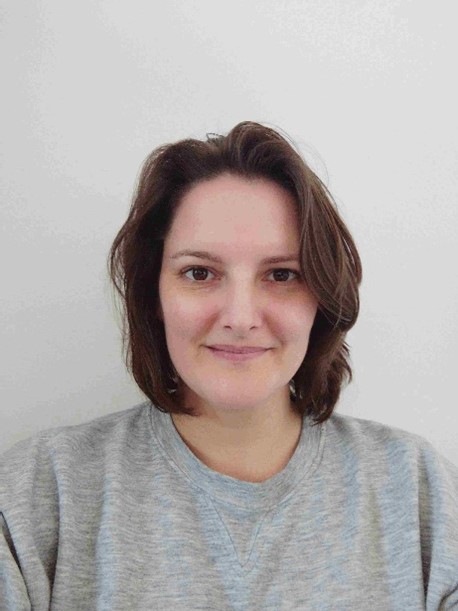
Dr. Kenda Knowles is a Senior Research Fellow at Rhodes University working in the field of astrophysics. Her work focuses on the physics of galaxy clusters, aiming to understand the constituent galaxies, plasma, and magnetic fields, the physical processes that affect them, and how these processes may evolve over cosmic time or with cluster properties.
South African-born, Dr Knowles obtained her PhD in observational astrophysics and cosmology from the University of KwaZulu-Natal, and is very involved with radio astronomy in South Africa.
A winner of a 2017 L'Oreal-UNESCO For Women in Science Sub-Saharan Africa Postdoctoral Fellowship, she has recently led the first data release of the MeerKAT Galaxy Cluster Legacy Survey, a rich dataset of 115 cluster targets to the global community. She is also the PI of the MERGHERS survey, a tiered programme of cluster observations with MeerKAT aimed at probing the cosmic and mass evolution of diffuse cluster radio emission. Dr Knowles is passionate about student training and using her research programmes and local and international networks to prepare South Africans to contribute to and to lead international astronomy research.
Abstract Title: Leveraging MeerKAT to train the next generation of South African astrophysicists
When South Africa applied to host the Square Kilometre Array (SKA) project in the mid-2000s, a decision was made that, irrespective of the outcome of the bid, the country should build and host a premier radio telescope of their own. Thus the MeerKAT was born and has become a world-renowned instrument during its first five years of operation, producing ground-breaking science in a wide range of research areas. With South Africa to host the mid-frequency component of the SKA, MeerKAT plays a critical role in developing local human capital who will use the major radio observatories of the future. In this talk I will discuss some of the science being done with MeerKAT and how these projects are helping to train the next generation of African astronomers.
Prof. Gugu Mhlongo
Biography: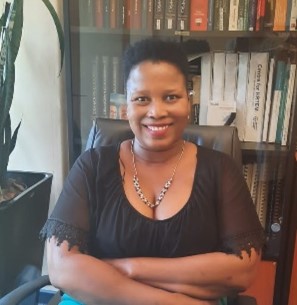
Prof. Gugu Mhlongo joined the CSIR_ Centre for Nanostructures and Advanced Materials (CeNAM) in 2007 under CSIR PhD studentship programme in collaboration with the University of the Free State (UFS). She completed her PhD degree in record time and was the first black female to graduate with PhD in Physics department at UFS in 2011. At present, Prof. Gugu Mhlongo is employed as a principal researcher appointed as an acting research group leader for gas sensor group and a project leader for gas nanosensors for food safety platform existing within the gas sensor group. Before she resumed this role, from 2017 to 2019 she was acting as the characterization facility manager at CeNAM which is mainly focused at providing characterization support to the nanotechnology community, and others including researchers from universities and other public research institutions, as well as industry. Prof. Gugu Mhlongo is also appointed as an Affiliated Associate Professor at the University of the Free State at the Physics department.
She has conducted tremendous work on novel advanced and functionalized nanostructured materials for nanosensor development. This is an important area in the nanomaterials sciences considering the high demand for gas sensors for food safety, environmental monitoring as well as disease diagnosis. Although she has wide interests, thus far, her main focus has been on magnetic, defect structure control and luminescence properties i.e., down-conversion and up-conversion studies of nanomaterials for energy applications, in which she has developed expertise over the past few years of research. For the past two years, the impact on knowledge generation on her field of research that she has made has been noticed at an international level. She has published more than 50 papers and 5 conference proceedings (as a first, corresponding and co-author), co-authored 2 book chapters. Currently having h-index of 26. She has presented some of her research work as a guest, invited and keynote speaker in more than 20 local and international conferences.
Abstract Title: “What is like to be a woman in Physics: Life-Experiences, Success, and Challenges”
In general, physics, math, and science are regarded as foundational subjects, and hence studying them opens doors to a wide range of opportunities, including scientific research while stimulating your mind. Often time, many physicists care about improving the success of women in physics, however, research on effective intervention strategies has been insufficient. In fact, reports have revealed that the percentage of women in post-graduate physics positions has stalled at just below 20% internationally and this is one of the most pressing concerns around the world [1]. Global surveys conducted by The American Institute of Physics where they tracked down participation and representation of women in physics revealed unequal resource distribution and parenting to have long-term effects on women’s careers [2]. Despite, women have made significant contributions to applied physics research and development, hence their participation is of significance to continued progress [3].
Furthermore, as a woman working in the discipline of Physics for the past 17 years, there has been a slight change in attitudes towards women. For instance, the research institutes as well as universities are very aware of the need to support and promote women pursuing their careers in this discipline. Various programs to support women with a mentoring and leadership focus are implemented and their impact is being recognized. This do help shift attitudes otherwise the numbers of women in STEM would have dropped even more over the last decade. On another note, even though our mindset is changing, we are hitting a wall considering that we are mostly working in our confined spaces and yet one of the keys to progress and breakthroughs is collaboration. In fact, the greatest scientific outcome and impact is done when we incorporate people with many different passions and perspectives.
References
- B. Abad et al.; The 2022 applied physics by pioneering women: a roadmap, J. Phys. D: Appl. Phys. 56 (2023) 0730001
- R. Ivie and C.L. Tesfaye; Women in physics: a tale of limits, Phys. Today 65 (2012) 47–50
- R. Skibba; Women in physics, Nat. Rev. Phys. 1 (2019) 298–300
Prof. Jeffery Lynn
Biography: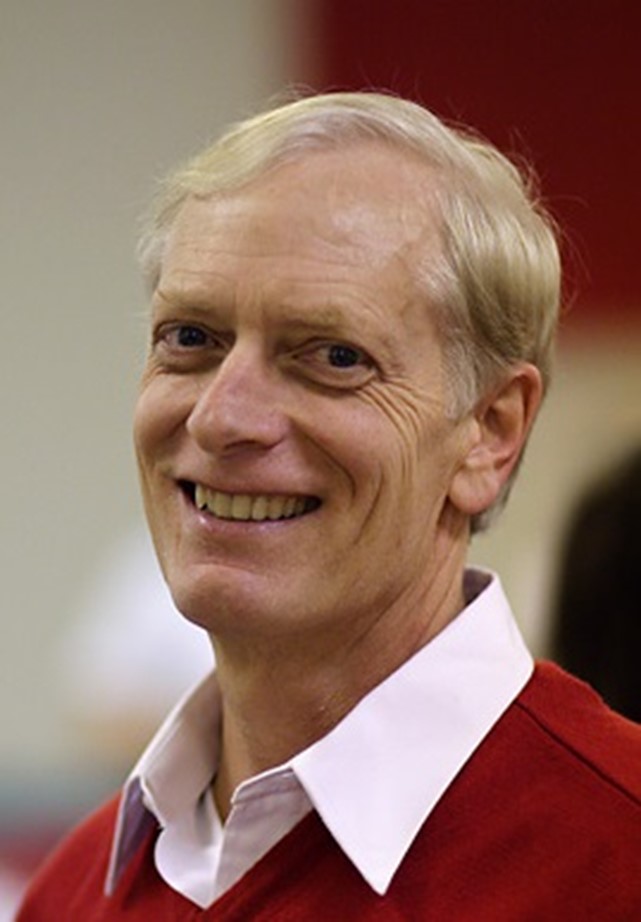
Jeffrey Lynn began his neutron scattering career as an undergraduate at the Georgia Institute of Technology and received his doctorate in 1974 from Georgia Tech while conducting his thesis research as an Oak Ridge Associated Universities Fellow at the High Flux Isotope Reactor, Oak Ridge National Laboratory.
He then joined the neutron scattering group at Brookhaven National Laboratory as a postdoctoral fellow, before accepting a faculty appointment in the Department of Physics at the University of Maryland and consultant at the National Bureau of Standards (now NIST). In the 1990’s he joined the NIST Center of Neutron Research full time, resigning his tenure to become Adjunct Professor of Physics at the University of Maryland.
He has held various elected leadership positions in the American Physical Society, and is a Fellow of the APS, the Neutron Scattering Society of America, and the Washington Academy of Sciences. Currently he is NIST Fellow and Team Leader of Condensed Matter Physics at the NIST Center for Neutron Research, and also a member of the Quantum Materials Center at the University of Maryland.
His research focuses on neutron scattering studies of the structure and dynamics of magnetic, superconducting, and topological materials. He has written numerous reviews as well as a graduate text (edited) on High Tc superconductivity, has well over 600 publications in refereed journals that have accrued more than 36,000 citations, and an H index (GS) of 96.
In 2011 President Obama selected him to receive the Distinguished Award of Presidential Rank, the Nation’s highest civil service award. In 2014 he received the Sustained Research Award from the Neutron Scattering Society of America, and was announced by Thomson Reuters as one of the World's Most Influential Scientific Minds, being one of the most highly cited authors in Physics over the decade 2002-2012, and the only such scientist worldwide at a neutron facility in any scientific discipline.
Abstract Title: Topological Materials with Intriguing Magnetic Textures.
The topic of magnetoelectronic properties of topological materials is of high interest from both the fundamental physics and applications viewpoints. Our focus is on systems that exhibit long range magnetic order, investigated via neutron scattering, and how that order tailors the electronic properties. One interesting example is provided by the tetragonal CeAlGe material, where the strong coupling of the magnetic order with the Fermi topology allows a singular angular magnetoresistance to emerge. For YMn 6 Sn 6 , on the other hand, the magnetic structures in the appropriate temperature and magnetic field regime are incommensurate in nature with concomitant strong spin fluctuations that give rise to a large topological Hall effect. This topological Hall effect has a completely new origin based on thermal fluctuations, which naturally develop at elevated temperatures. Both of these examples beautifully demonstrate the synergy between transport measurements, neutron scattering determinations, and theoretical calculations to understand the properties. Finally, we present recent work on systems where the large moment magnetism of the isotropic spin-only Eu 2+ rare earth ions provide platforms for field-induced topological Hall regimes, or coupled charge and spin orders, or a system with an exceptionally high electron mobility that allows an intrinsic spin Moiré superlattice to emerge.
Dr. Anthonie Kotze
Biography: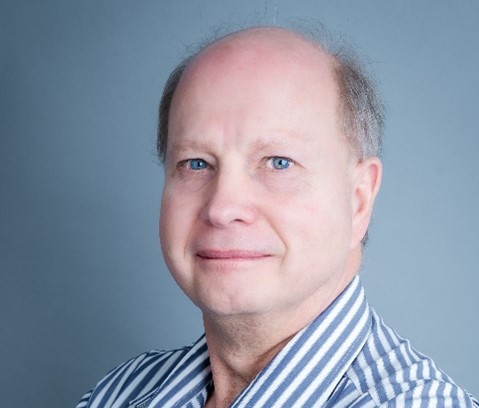
Antonie was employed as a junior lecturer in the Applied Mathematics department at the Rand Afrikaans University (now UJ) while busy with his PhD in 1990. In 1993, he moved to Standard Bank and then to Rand Merchant Bank (RMB) in 1994, where he gained invaluable experience in the trading and modelling/simulation of all financial instruments as a front, middle, and back-office quant. Antonie also became familiar with the trading and risk systems banks use.
In 1999, Antonie traded bonds and bond derivatives at a small brokerage before spending two years at ABSA as a front-office quant. He started his consultancy in 2003 and his asset management firm in 2008.
Antonie has been involved in several notable projects throughout his career, including sitting on three risk committees of FirstRand, being part of the team that initiated Can-Dos and listed foreign exchange derivatives at the JSE (Safex), valuing Lehman's listed derivatives book on Safex when they defaulted in September 2008, and initiating the listing of exotic options on Safex.
He further developed the methodology to generate the volatility surface used at Safex for index options (used from 2009 to 2017), quantified the JSE's default fund (insurance if a clearing member defaulted), valued the credit and market risk apparent at Old Mutual PLC when it separated (unbundled) in 2017, and was part of the team that configured the Murex trading and risk management system at RMB from 2017 to 2020.
Finally, Antonie helped the JSE to ensure their initial margin calculations were up to standard during the Covid crisis.
Abstract Title: Physics in the financial markets
What can a physicist do in the financial markets? I will discuss the plenty of opportunities to practise physics, mathematics and statistics and that one can survive and thrive. Physicists in the financial markets are named quants (quantitative analysts), rocket scientists and financial engineers. An applied mathematician and two economists reshaped the financial markets in 1973. Two received the Nobel prize for economics in 1997. I will discuss the Black-Scholes-Merton equation and why it is so significant and necessary in our modern age of trading and hedging foreign exchange, equities and interest rates. Instruments like swaps, options, futures and credit default swaps are called derivatives and are traded daily at banks and stock exchanges around the globe. Global trade and investments cannot blossom without these instruments, and we will show you why.
Prof Krish Bharuth-Ram
Biography: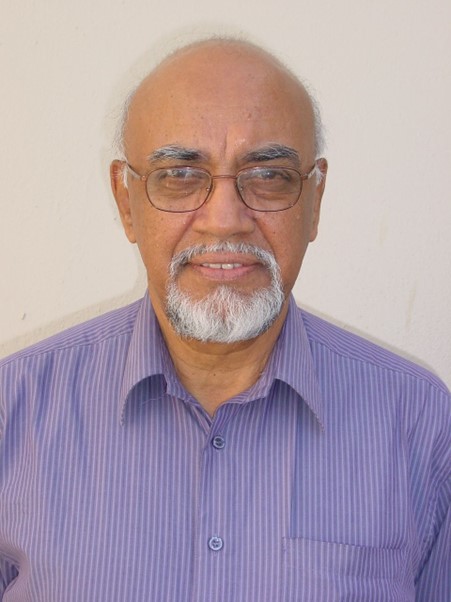
Honorary Research/Retired Professor: Prof Krish Bharuth-Ram Email: kbr@dut.ac.za Qualification(s): D.Phil Nuclear Physics, Oxford University Area of expertise: Nuclear Condensed Matter physics Subject expertise: Applied Nuclear Physics, Hyperfine Interactions Academic Interests: Black research capacity development in South Africa ORCID: https://orcid.org/0000-0001-9721-6374 Research
Collaborations:
• Professor Dr Carsten Ronning, Institute for Solid State Physics, Friedrich-Schiller University, Jena, Germany • Dr Uli Wahl, Institute for Nuclear Technology, Lisbon, Portugal
• Dr Guilherme Correia, ISOLDE, CERN, Geneva
• Dr H P Gunnlaugsson, Science Institute, University of Iceland, Reykjavik, Iceland
• Prof D Naidoo and Dr H Masenda, Physics Department, University of the Witwatersrand, Johannesburg
• Prof T B Doyle, School of Chemistry and Physics, University of KwaZulu-Natal, Durban
• Head of SA-ISOLDE group in the National SA-CERN Programme, 2009-2018 Research and Innovation focus: Applications of nuclear methods in the modification and characterization semiconducting materials, with a focus on potential spintronic materials, i.e. semiconducting material implanted with spin carrying dopant ions. Techniques involved here are ion implantation, Moessbauer spectroscopy and magnetization measurements Direct determination of the lattice sites of implanted transition metal (TM) and rare earth (RE) ions in diamond: There is renewed interest in the lattice location of heavy ions incorporated in diamond, ranging, for example, from the creation of luminescence centres in diamond to building blocks for quantum networks based on split vacancy centres in diamond. This program is at the online radioactive beam facility, ISOLDE, at CERN, Genave. Applications of Mössbauer Spectroscopy in Chemistry and Condensed Matter Physics : A range of projects have been conducted with colleagues in the Emission Mössbauer Collaboration, ISOLDE/CERN, the School of Chemistry and Physics, UKZN (Venkat Dasireddy, H Friedrich, Faeeza Khan), National Institute of Chemistry, Slovenia, and Indian Institute of Technology – Delhi, India.
Abstract Title: Ion beam Modification and Characterization of Materials Two examples from measurements at the rib facility ISOLDE at CERN
Two initiatives drive our current research in ion beam modification of materials: a) Search for spintronic oxide and nitride semiconductors, i.e. semiconductors doped with very low concentrations (≤ 5 at. %) TM ions, the so-called dilute magnetic semiconductors (DMS), which if realized would have room temperature ferromagnetism (RTFM) coexisting with the charge carrier semiconducting functioning of the system, and b) Determination of the lattice occupancy of heavy ions implanted in diamond. Studies (a) were conducted in 57 Fe-emission Mössbauer Spectroscopy (eMS) measurements following implantation of precursor radioactive 57 Mn * ions into host substrates at the online radioactive ion beam facility ISOLDE at CERN. EMS measurements on ZnO show strong magnetic sextets in the spectrum but the magnetic field shows no dependence on temperature, hence ruling out ferromagnetic behaviour. Further measurements on ZnO pre-implanted with C, Ar, Fe and Co ions show similar results. In studies (b), over the years (since 1993) we have conducted Emission Channeling (EC) measurements on a range of radioactive (Li, P, Fe, Cu, Ce, Gd, Er) ions implanted in diamond. The lattice occupancy of the probe ions is extracted from channeling effects on the emitted decay products of the probe nuclei by the positively charged atomic rows of the crystal lattice. These lead to anisotropic yields of the -particles, conversion electrons or -
particles emitted by the nuclear probes with respect to the major lattice directions of the host. Sample results will be presented of eMS measurements on ZnO and of EC measurements on Er and TM ions implanted in diamond.

